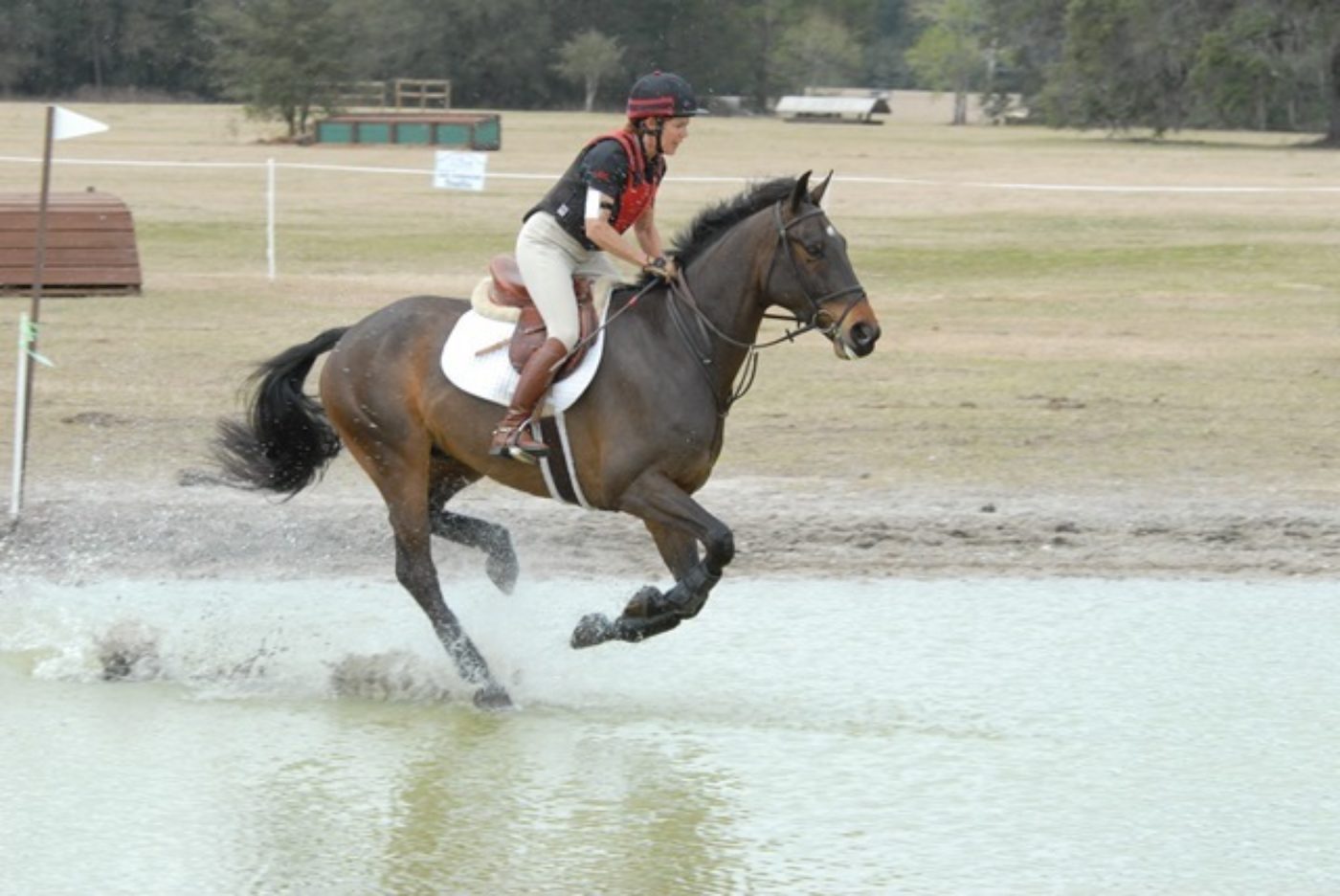

The Young and Future Event Horse article series is being provided through a partnership between Mythic Landing Enterprises, LLC., and the USEA.
Young Event Horse judge Debbie Adams has always brought her own young horses along in the sport and to her, it just felt right to get involved with the USEA Young Event Horse (YEH) program. When Debbie is not competing, she is running her business, Debbie Adams Select Sport Horses, judging YEH competitions, or organizing the Flora Lea Horse Trials. She is also a Level III ICP instructor and USEF judge.
Debbie says that from a judge’s perspective, the gallop of an event horse prospect has begun to take on more importance at YEH competitions. Debbie explains, “The gallop is so important which is why the decision has been made to give it its own score. In our sport today, it is imperative to have a horse that moves in a rhythm, efficiently across the ground, and has a good length of stride. The horse needs to use its body properly to propel itself forward with its hind end, and with uphill balance.”
Cross-country courses at the three and four-star level require these athletes to run and jump for 10-11 minutes. “To have a competitive horse at the upper-levels, they need an uphill balance when they gallop so they can be more adjustable and elastic. These qualities reduce the time that the rider needs to set them up for a jump or combination. Additionally, these natural advantages reduce the wear and tear on the horse’s body,” Debbie says.
When judging at Young Event Horse competitions, Debbie watches the horse’s gallop not only at the end of their course when the rider particularly shows that gait off, but between the jumps as well. “I’m looking for horses that are elastic and adjustable. Do they need a big adjustment before the jump or do they have a natural uphill balance requiring their rider to only balance a few strides before? I’m also judging the strides before the jump and the strides after.
“A successful jump for me is one that is taken on a balanced stride and the rhythm stays the same on landing. I’m also looking at how each horse handles the turns. Are they balanced and underneath the rider, or simply running through the rider’s aids and avoiding any adjustments? All of this goes into the judge’s final gallop scores for the horses.”
Debbie has years of experience training young horses and successfully bringing them up through the levels. For riders that are looking to receive better marks on this element of the competition, Debbie offers a few suggestions. “For the baby horse in your barn, introduce the hand-gallop first. As a rider, be sure that you are very balanced on top of them and are able to direct your horse’s energy so they don’t begin to interfere with themselves and get nervous. I like to keep my youngsters a bit round in shape and not allow them to brace against me in the bridle, which will only affect their adjustability down the road. The earlier you can introduce this to them, the better so they can begin to get comfortable with it. As an event horse, the gallop needs to become a part of their life.”
Once a horse turns 4 or 5 years old, it is time to finesse this gait. “I’m an advocate of taking young horses out on terrain that is slightly uneven. I like doing this because they have to react and adjust. For instance, they may need to bring their hind leg farther forward on a sloping terrain.”
Debbie continues, “Riders should also include speed variation on terrain into their training regimen. Connect the gallop when you first start to introduce the concept so that they are able to develop the right muscles and top line. Establishing rhythm and balance first and foremost is crucial in order to be successful not only at YEH competitions, but as they progress through the levels of eventing.”
As for the future of the program, Debbie mentioned a very exciting new addition. “As in Germany, we will be allowing the riders that come to compete in the YEH divisions to participate in a mounted course walk before the competition starts. I believe this a true game changer for the program, as it is a wonderful schooling and exposure opportunity for these young horses. We want to keep instilling a non-stressful environment and this addition does just that. We’re hoping more riders and breeders will bring their horses to these competitions because of this unique opportunity and keep growing the sport to produce upper-level talent.”
To learn more about Debbie and her program, please visit her Facebook page, Debbie Adams Eventing. Learn more about the YEH program here.
The USEA Foundation is pleased to announce a new initiative, the Janet Briggs Fund for the Continuing Education of Licensed Officials. Established in memory of Janet Briggs, this fund honors her lifelong dedication to the sport of eventing by supporting the ongoing education and development of eventing licensed officials.
In the rolling countryside of Metamora, Michigan, there’s a place where eventers gather not just to compete, but to celebrate the spirit of the sport. Area VIII’s Hunter’s Run Farm—home to the Hunter’s Run Farm Horse Trials—has long been a beloved destination for riders across the Midwest, and this year, it’s gearing up for one of its most exciting seasons yet.
Are you following along with the action from home this weekend? Or maybe you're competing at an event and need information fast. Either way, we’ve got you covered!
Warm weather is here, and the show season is underway, which is a perfect time for a yearly saddle and equipment check. Recently, Bates Saddles held a webinar alongside British Eventing where Emily Bates, head of product innovation at Bates Saddles, went through a saddle health check. Here are some of her top tips!